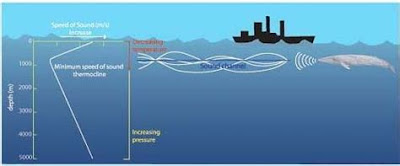5 Biggest Mysteries The deep ocean will be discussed in this article. Welcome to this article, where we will explore some of the most fascinating and mysterious aspects of the deep ocean. The deep ocean is the largest and least explored part of our planet, covering more than 60% of its surface and reaching depths of over 10,000 meters. There are many secrets and wonders hidden in the dark and cold waters, some of which we may never discover. Here are five of the biggest mysteries in the deep ocean that will blow your mind.
What lives in the deepest parts of the ocean?
The deepest part of the ocean is called the Hadal Zone, which extends from 6,000 to 11,000 meters below sea level. This is where the deepest trenches and canyons are located, such as the Mariana Trench, which is the deepest point on Earth at 10,994 meters. The pressure in this zone is so high that it would crush most living things, and the temperature is near freezing. Yet, some amazing creatures have adapted to survive in these extreme conditions, such as giant tube worms, anglerfish, viperfish, amphipods, and even a new species of snailfish that was discovered in 2018 at a depth of 8,178 meters. However, we have only explored about 5% of the hadal zone, so there could be many more unknown species waiting to be found.
How does sound travel in the deep ocean?
Sound is a form of energy that travels as waves through a medium, such as air or water. Sound travels faster and farther in water than in air because water is denser and more elastic. However, sound also changes speed and direction depending on the temperature, salinity, and pressure of the water. In the deep ocean, there is a layer called the SOFAR channel (Sound Fixing and Ranging Channel), which is between 600 and 1200 meters deep and where sound travels at its slowest speed. This creates a natural acoustic waveguide that traps sound waves and allows them to travel long distances without losing much energy. For example, whales can communicate with each other across thousands of kilometers using low-frequency sounds that travel through the SOFAR channel.
What causes bioluminescence in the deep ocean?
Bioluminescence is the ability of some living organisms to produce light through a chemical reaction. It is very common in the deep ocean, where sunlight does not reach and darkness prevails. Many marine animals use bioluminescence for various purposes, such as attracting prey or mates, defending themselves from predators, or communicating with others. Some examples of bioluminescent animals are jellyfish, squid, shrimp, plankton, fish, and even some bacteria. The mechanism of bioluminescence varies depending on the species, but it usually involves a molecule called luciferin that reacts with oxygen and an enzyme called luciferase to produce light. The color and intensity of the light can also vary depending on the type of luciferin and luciferase involved.
What are hydrothermal vents, and why are they important?
Hydrothermal vents are openings in the seafloor where hot water rich in minerals and gases escapes from cracks in the Earth's crust. They are usually found near volcanic or tectonic activity zones, such as mid-ocean ridges or subduction zones. The water temperature at hydrothermal vents can range from 60 to 400 degrees Celsius, and the pressure can be up to 300 times that of the surface. Hydrothermal vents are important for several reasons. First, they provide a source of energy and nutrients for a diverse and unique ecosystem of organisms that live around them, such as tubeworms, clams, mussels, crabs, and bacteria. These organisms use a process called chemosynthesis to convert the chemicals in the vent water into organic matter without relying on sunlight. Second, they play a role in regulating the chemistry and temperature of the ocean by transferring heat and elements from the Earth's interior to the water. Third, they may hold clues to the origin of life on Earth, as some scientists believe that life may have started in hydrothermal vents billions of years ago.
What are the effects of human activities on the deep ocean?

Human Activities In The Deep Ocean
The deep ocean is not immune to the impacts of human activities, even though it is far from our sight and reach. Some of the main threats that humans pose to the deep ocean are overfishing, pollution, climate change, and mining. Overfishing can deplete the stocks of fish and other marine animals that live in the deep ocean, as well as damage their habitats and food webs. Pollution can contaminate the water and sediments with harmful substances such as plastics, chemicals, radioactive waste, and noise. Climate change can alter the temperature, acidity, oxygen levels, and circulation of the deep ocean, affecting its physical and biological properties. Mining can disturb the seafloor and release toxic materials into the water, harming the organisms and ecosystems that depend on them.
You Must Read ;
- 5 Biggest Mysteries From Indonesia
- 4 Biggest Mysteries In The World
- 5 Biggest Mysteries In The Universe
- 5 Biggest Mysteries From India
- 4 Mysteries From Deep Sea
Conclusion
The deep ocean is a mysterious and fascinating place that holds many secrets and wonders. It is home to a variety of life forms that have adapted to extreme conditions, some of which we have yet to discover. It also plays a vital role in maintaining the balance and health of our planet. However, it is also facing many challenges and threats from human activities that could jeopardize its future. We need to respect and protect the deep ocean, as it is an integral part of our natural heritage and a source of inspiration and knowledge.
Thank you for reading this article. I hope you enjoyed it and learned something new. See you again in another interesting article that you can Search on Google




Post a Comment for "5 BIGGEST MYSTERIES IN THE DEEP OCEAN"